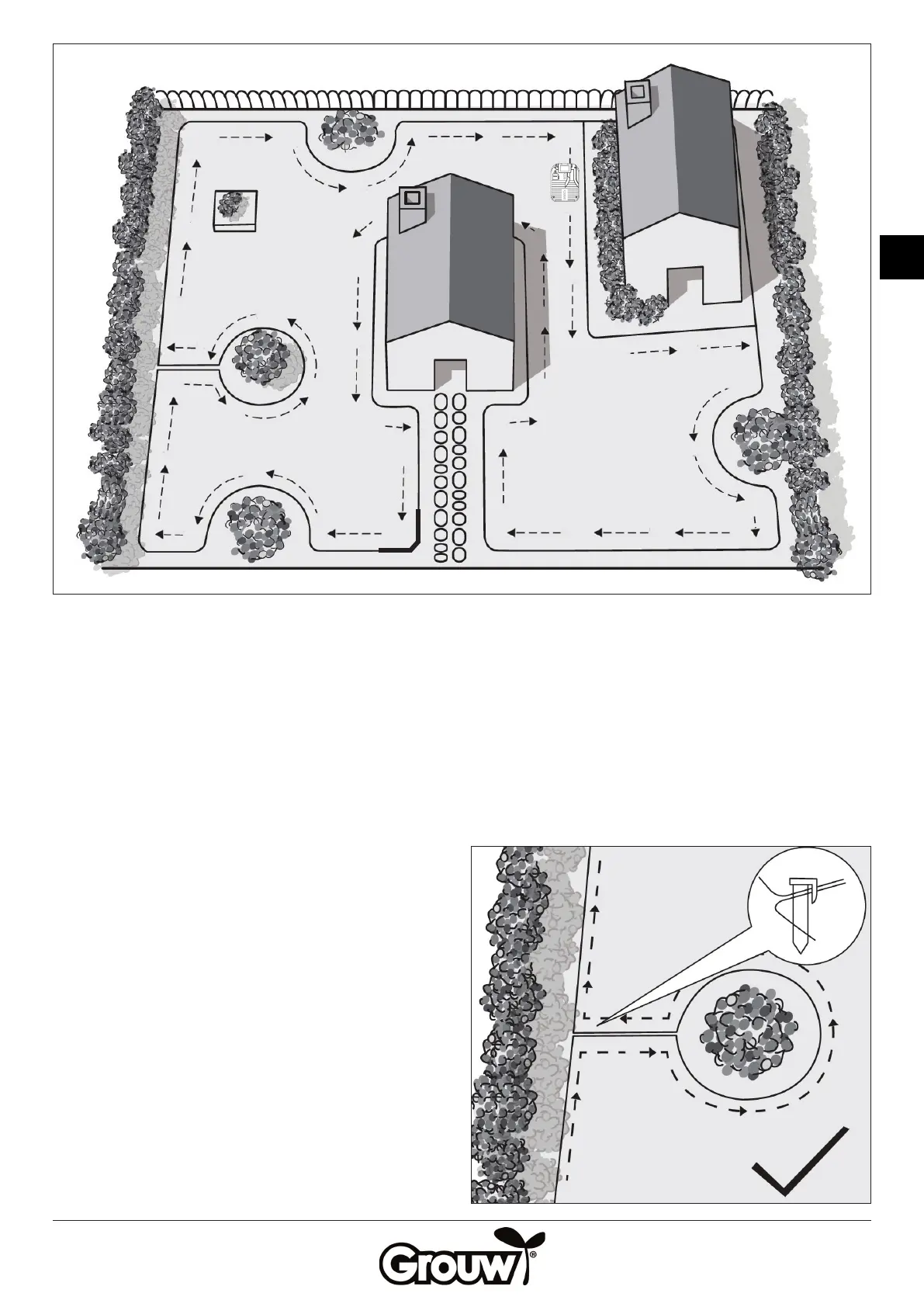55
GB
Step 2: Laying out the boundary wire
Follow your sketch of the garden and lay out the
boundary wire clockwise so that you create “islands”
anticlockwise around any obstacles. Avoid 90 degree
corners. Instead, divide them up in two 45 degree
angles as shown in corner A above.
Use a rubber mallet to secure the boundary wire with a
plastic peg at least once every metre. If the pegs break
or are dicult to knock in because the ground is hard, it
may help to water the lawn rst.
Secure the boundary wire as close to the ground as
possible, preferably right down by the grass roots. The
boundary wire must be taut, and there must be no
gaps under it. It is important that the robot lawnmower
cannot touch the boundary wire with its blades, which
would cut the wire. It is recommended therefore that
the cutting height be set to 60 mm or that the blades
are removed for the test run.
Over the course of a few weeks, the lawn will grow
up around the boundary wire so that you cannot
immediately notice it in the garden.
If you are able to use a scarier or verticutter on the
lawn, you should instead dig the boundary wire down
into a groove no more than 5 cm deep so that it is
protected under the soil surface. Remember to adjust
the scarier or verticutter so that the blades/rakes
cannot reach down to the boundary wire.
The boundary wire can be left on the grass in some
places and under the ground in others, or under paving
stones with a thickness of up to 5 cm.
Obstacles must be enclosed as “islands”
The boundary wire running to and from an island
must be laid quite close together and must be secured
using the same pegs. This ensures that signals from
the boundary wires to and from the island oset one
another so that the robot lawnmower does not register
them as a barrier.
A
